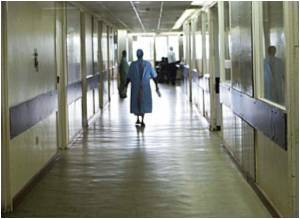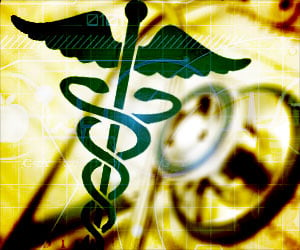
"These fluorescent RNAs offer us a tool that will be critical for understanding the diverse roles that RNA plays in human biology," says the study's senior author, Dr. Samie Jaffrey, an associate professor of pharmacology at Weill Cornell Medical College.
In recent years, the many roles played by RNA have become clearer. "Scientists used to think that RNA's function was limited to making proteins and that these proteins alone dictated everything that happened in cells," he says. "But now we are understanding that cells contain many different forms of RNA -- and some RNAs influence cell signaling and gene expression without ever being used for synthesizing proteins."
The list of known types of RNA has grown rapidly over the past several years -- from messenger RNA that codes for proteins, to diverse "non-coding" RNAs that affect translation and gene expression, and in some cases bind to proteins and regulate their function -- yet little is known about how these RNAs work, the researchers say.
The study's first author, Dr. Jeremy Paige, who conducted the research as a graduate student in pharmacology at Weill Cornell Medical College, adds that the new technology may provide insights into the development of common disorders. "More and more diseases are being linked to misregulation of RNA, but without being able to see the RNA, we can't understand how these processes lead to disease.
"We hope our RNA mimics of GFP open up the road to discovery," he says.
Advertisement
To make an RNA that functions like GFP, the Weill Cornell investigators took advantage of the ability of RNA to fold into complex three-dimensional shapes. Their goal was to create two new entities: a synthetic RNA sequence that would adopt a specific shape, and a small molecule that would bind to the new RNA and begin to fluoresce. "These were two huge challenges," says Dr. Jaffrey. "One challenge was to come up with an RNA sequence that could 'switch on' a small molecule. The other big hurdle was to find a small molecule that would fluoresce only when we wanted it to and would not be toxic to cells."
Advertisement
The researchers went even further. They also developed several other RNA-fluorophore pairs, in addition to Spinach, that each emit a different fluorescent color, just as GFP has been evolved to exhibit a palette of colors that helps researchers track many proteins at once. Whereas GFP derivatives are often named after fruits, the Weill Cornell researchers named their RNA mimics of GFP after vegetables -- Spinach, Carrot and Radish.
The Weill Cornell investigators have already begun to use Spinach to track non-coding RNAs in cells. "Our laboratory has been very interested understanding why defects in RNA trafficking and translocation lead to developmental disorders in children, such as mental retardation," says Dr. Jaffrey. Using Spinach, they were able to watch as a non-coding RNA, fluorescing green, rapidly clusters in response to cellular stress. "We expect that Spinach will provide new insights into RNA trafficking in cells, and how this is affected in medical disorders," he says.
"There is still a lot of mystery surrounding RNA in biology. Fluorescent labeling and imaging has proved to be a powerful tool for scientists in the past, and we are hoping that Spinach too will be a tool that helps accelerate scientific discovery," says Dr. Paige.
Source-Eurekalert









